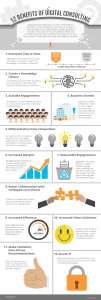Columnist Chuck Moran explains how the lessons learned from the evolution of ad tech over the years can be applied to martech.

Since the first RTB ad was placed in 2010, our industry’s story has been one of rapid, often painful evolution. Alongside the technological disruption, however, we have also seen numerous troubling revelations that shook marketers’ confidence, and in turn changed their approach.
Just as programmatic and social began to take off, news emerged detailing the extent of ad fraud, the vast quantity of non-viewable impressions, the prevalence of ad blocking and the opaque measurement practices by those who came to be known as the walled gardens. As much as new technology forced changes to our business, these crises of confidence forced changes to the way we approach the technology and understand its outcomes.
Today’s advertisers operate with a keener eye toward the details, second-guessing their claims and results, no longer taking anything for granted. These general lessons from ad tech are applicable across the full marketing stack, especially as the lines between ad tech and martech begin to blur.
Lesson #1: Nobody gets to grade their own homework
It wasn’t long ago that nobody knew whether their ads could be seen or not, but today advertisers are able to buy inventory that is guaranteed to be in-view, or know retroactively whether their ads were viewable. This is a remarkable transformation in a relatively short period of time, and it is due in no small part to the the rise of third-party firms whose entire purpose is to act as a check on the claims of advertisers. Even those firms — MOAT, Integral Ad Sciences and Doubleverify, for example — are overseen and accredited by the Media Ratings Council (MRC), providing a triple-check on their findings.
The major takeaway here is that independent oversight is needed for real accountability. Allowing publishers and ad networks to grade their own homework only erodes the critical trust between buyers, sellers and the technology platforms connecting them. For a space to thrive, everyone needs to operate under the same set of rules.
Right now, we see this dynamic playing out in dramatic fashion when it comes to the major “walled gardens,” namely Facebook, Google, Twitter and Snapchat. Facebook and Google, facing renewed pressure from major advertisers like P&G, have agreed to MRC audits of their own metrics, which have been shown to err in the past.
Lesson #2: Delegate, but don’t over-depend on automation
Programmatic technology originally automated the buying and selling of remnant inventory that buyers and sellers didn’t have the time to bother transacting directly. RTB (real-time bidding) thus created market efficiencies that didn’t exist before and added a lot of value to the ecosystem in the process.
But now, just seven years later, the majority of all display advertising is transacted through programmatic pipes, and automation is driving everything from premium placements to the creative itself. Marketers are tempted to automate everything they can. This is a major risk, as the perils of over-automation are real: executions that are irrelevant, poorly targeted, or worse, they get delivered in environments that damage the brand’s image. To pick a recent example, many brands that relied on automated audience targeting woke up on Nov. 9 to find they had been underwriting alt-right websites. Not a great place for baby products.
Smart advertisers are realizing that automation has a place in nearly every aspect of the process, but also that almost no processes can be left to automation alone. Human decision-making must inform the use of the technology, how and where it’s applied, to what ends it’s applied and how its success is to be measured. This applies across the entire data-driven enterprise.
Lesson #3: Understand your data from the ground up
Data is the glue that binds the marketing stack. That’s why it’s imperative that marketers develop a solid understanding of where and how their data originates and what it’s really telling them.
Marketers can get pretty far with any given strategy, targeting and optimizing along the way, all while relying on bad data. And at the end of a given campaign, no matter the channel, it’s nearly impossible to differentiate poor campaign performance with inaccurate inputs.
The more complex and interdependent the martech stack becomes, the more critical marketers should be of the data that connects the various points together. In a cross-device reality, data is always the linkage. Marketers should ensure it isn’t the weakest link in their campaign.
Lesson #4: User experience takes precedent
The threat of ad blocking has vaulted the user experience to the forefront of a publisher’s consideration. And publisher’s sensitivity has in turn forced marketers to consider the impact of their ads on the user experience, and that’s a positive development for everyone.
Ad blocking is not as sweeping a rebuke of advertising as it seems — it’s a blunt tool that users have to respond to what amounts to a matter of nuance. Research indicates that even among ad blockers, most users are totally fine with a certain number of non-invasive ads. What they object to are ads that are so loud as to draw away from the content, ads that are so personalized that they appear creepy, and ads that are so numerous that they bury the real editorial.
If they were driving users to block ads, then those ads weren’t working in the first place. What ad blocking demands is simply that the CMO consistently ask whether their tactics are respectful of the user’s experience and privacy.
Conclusion: Remain present
Marketers need to think critically about every portion of the marketing stack and question the assumptions inherent in how it operates and works together. The age of transparency in digital advertising is forcing these habits onto the advertising space, and they are habits worth transporting all up and down the stack.
Some opinions expressed in this article may be those of a guest author and not necessarily Marketing Land. Staff authors are listed here.
Marketing Land – Internet Marketing News, Strategies & Tips
(21)








